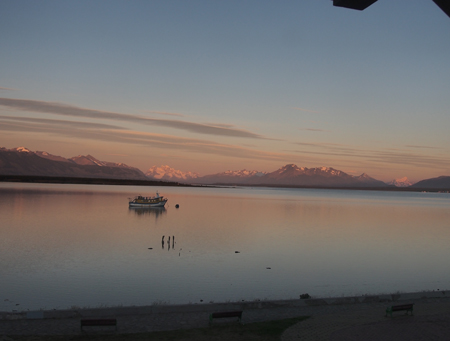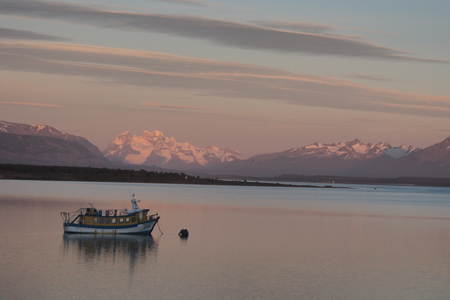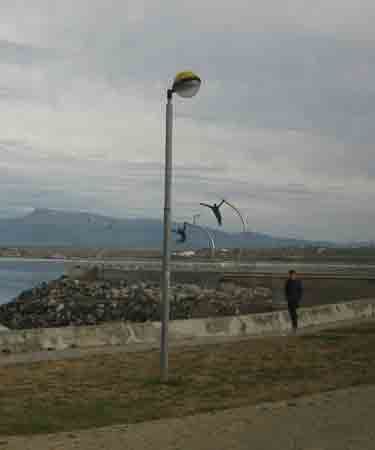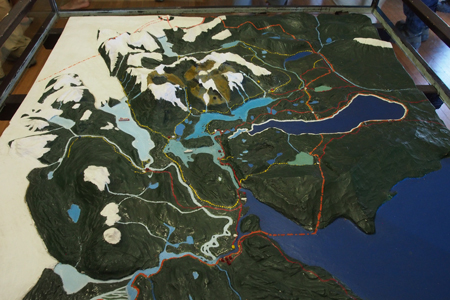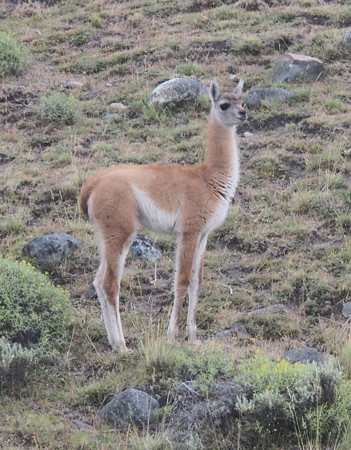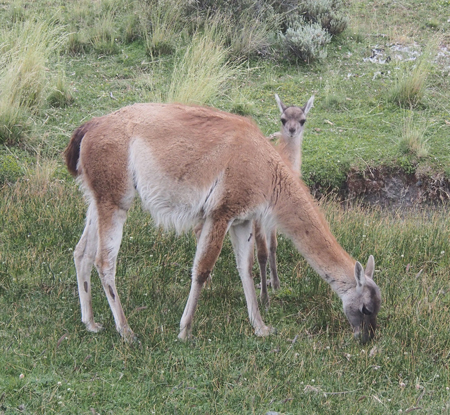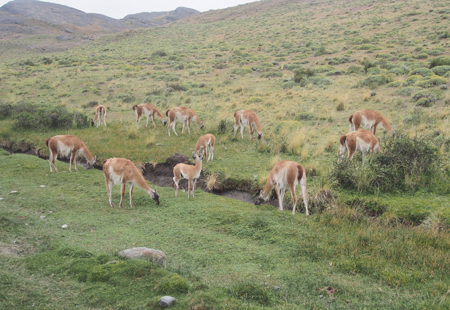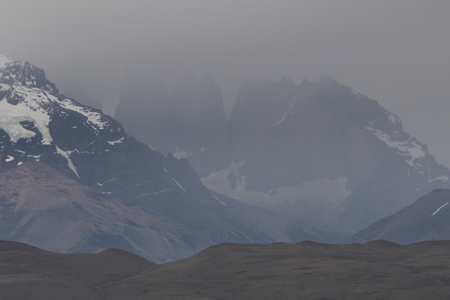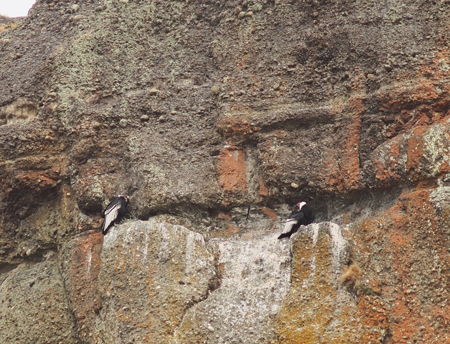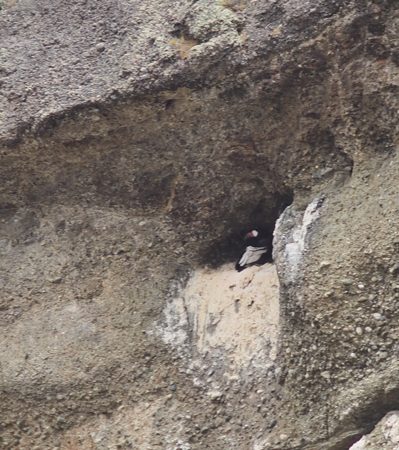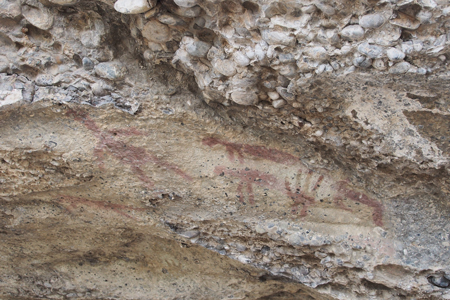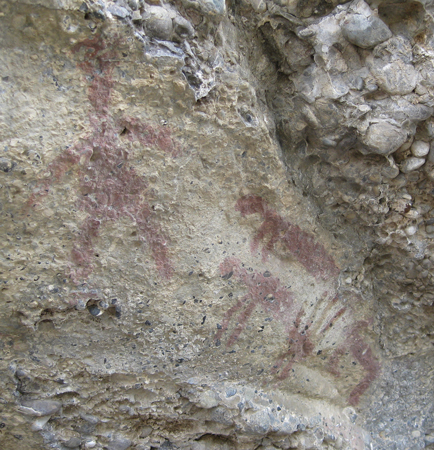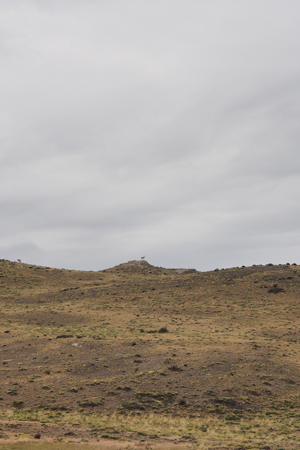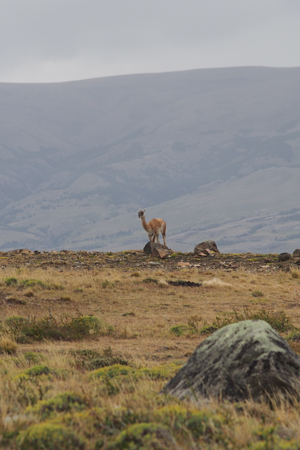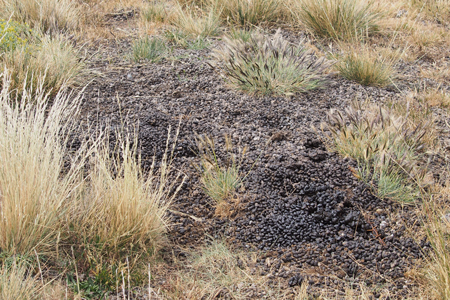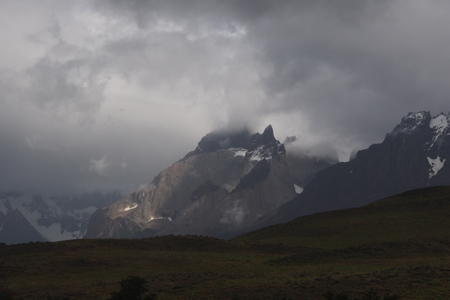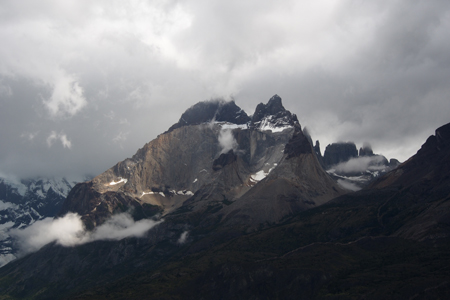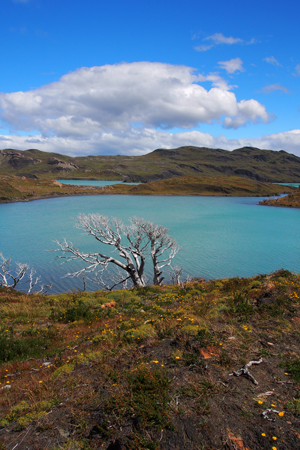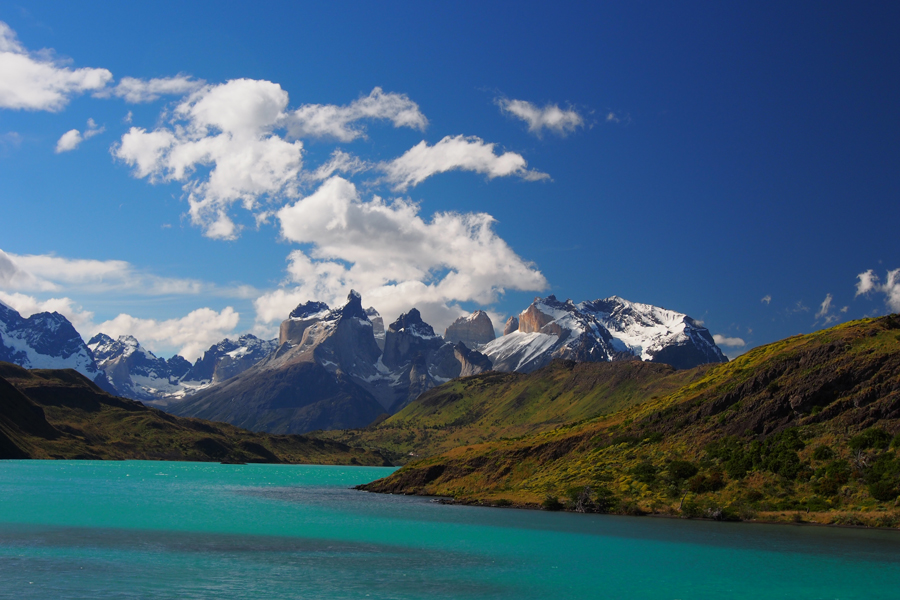Sat., 1/3/15 – Puerto Natales to Torres del Paine
Too bad we were only staying in Puerto Natales for one night. It seems like a cute town. But, we had to head for Torres del Paine National Park. Not far outside of town is the cave where the bones and pieces of skin from a Milodon or Mylodon were found. A milodon was a giant sloth and archeologists have since found bones of other prehistoric large animals in this area of Patagonia.
Carlos, our driver, continued spotting wildlife to show us. Today we saw two black crested buzzard eagles on fence posts, lots of guanacos and a few more rheas. Marge saw a bushy tailed red fox; I was asleep.
Sunset from our hotel room in Puerto Natales
Sunrise from our hotel room in Puerto Natales
Sculpture at Puerto Natales called "Homage to the Wind"
We entered Torres del Paine (pronounced piney) National Park with the Paine Massif in the center. It is not actually part of the Andes. The mountain was created by a very different geological phenomenon. Molten lava rose up but did not come to the surface. Instead it pushed up the upper layer of sedimentary rock. Eons of erosion have left a dark layer of sediment on top of white granite forming the “Horns” of Paine. The “Towers” are spikes of all granite. The massif or Great Paine has several glaciers.
In the park we began to see some of the estimated 3500 guanacos. The guanaco is the wild relative of the llama and alpaca. There were also many rheas near the entrances.
Guanaco
First "view" of the Towers - pictured here so you may appreciate the vast improvement in the weather that we experienced later
First "view of the Horns"
Our first hike of the day began at the park entrance station. The hike went uphill to a large monolithic rock standing all by itself in the steppes and shrub land. On a cliff near the top were three nesting condors. We watched as one took flight. The trail continued up onto the rock and at a natural cave we looked at 8- or 9,000 year-old rock paintings from the Aonikenk, hunter-gatherer natives. They were made with iron dust and animal blood and pictured a hand and several male figures. It was nice to get out and walk and the weather turned nice. We only had a few drops of rain and no wind. The temperature was probably 55° - hot for the numerous layers of clothing we started out in.
Andean condors
Rock painting
Looking out across the land
On our return, the two of the three condors had moved and were joined by a juvenile. What a treat!
Condor arriving
Family of three
Guanaco standing as a sentinel
Another sentinel
Guanacos all poop in the same place - wouldn't it be nice if the elk did the same!
Horns looking better
And better
And better - it is now easy to see the dark top of sedimentary rock and the lower white granite
The afternoon hike was on a trail toward the Horns. This hike began at an impressive waterfall, Salto Grande. It is the largest in the park. The water was a beautiful blue-green and the volume was rather large. The hike took us two hours but the views of the mountains, lakes, and open grassland were spectacular. It was so hot we shed most of our layers. Berenice kept warning us of the changing weather conditions – rain, wind, sleet – but it did not happen. We walked past Lake Nordenskjold to the end of the trail in front of the Horns (Cuernos) and the face of the Great Paine with a glacial lake in front of them. We heard several avalanches but could not see where they were.
This park has experienced three large fires since it was formed in 1959, in 1985, 2005, and 2011. We walked through several areas of ghost-like trees and they may never regrow. There were many areas of red grass, which is a plant that is the first to appear after a fire.
Outflow of Salto Grande Falls emptying into Lago Nordernskjold
Salto Grande Falls
The Horns
Dead beach tree along the shore of the lake
Lago Nordernskjold and the Paine Massif
The Horns and Towers across Lago Nordernskjold
| Return to Top | Return to Itinerary | Return to Trips page to view other trips | Return to Dreamcatcher Home Page |
